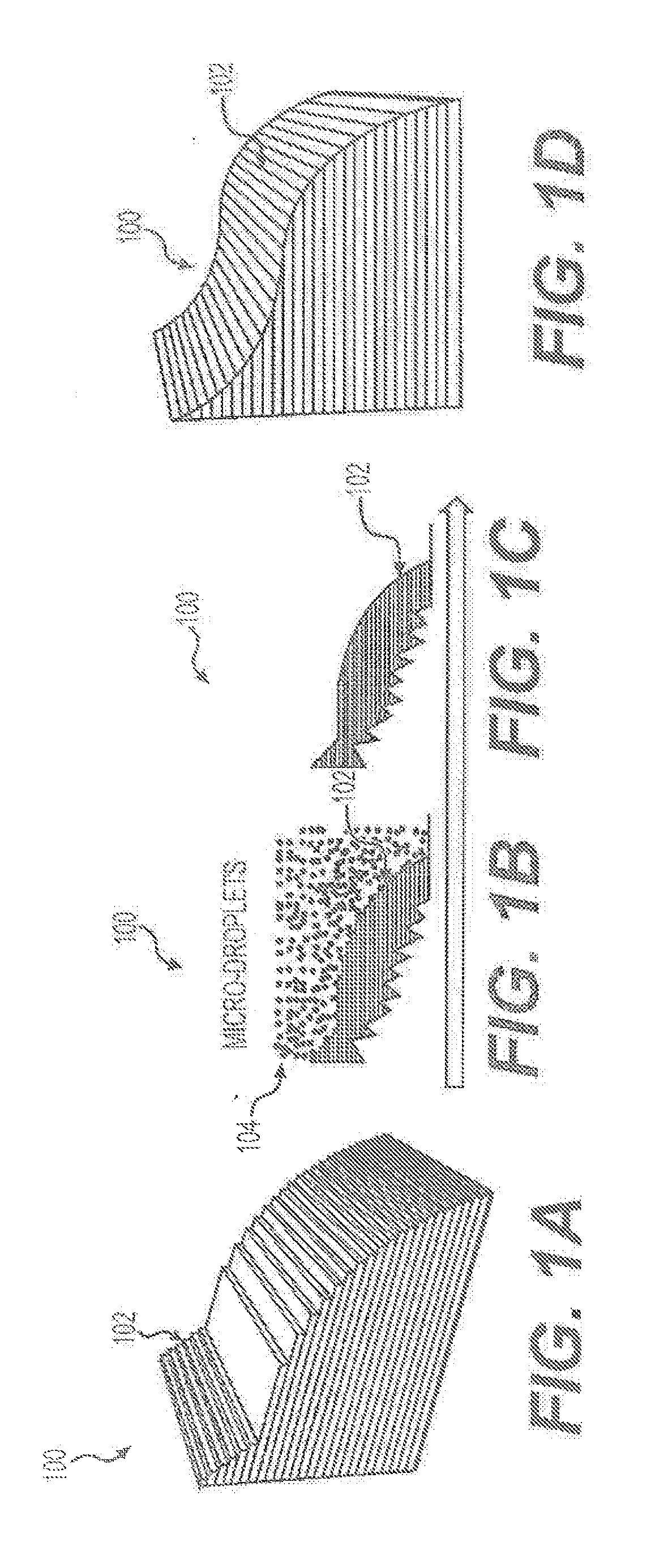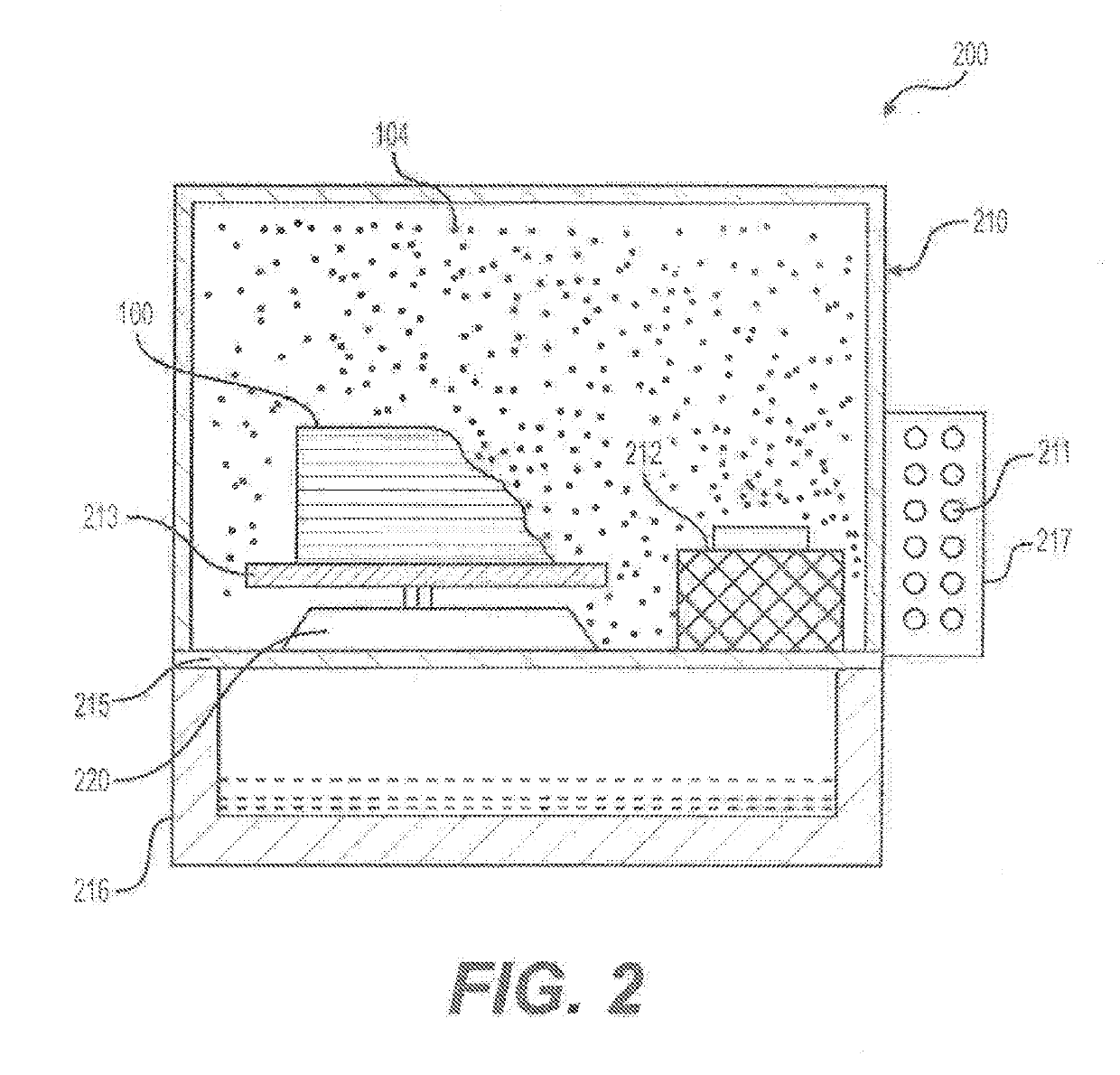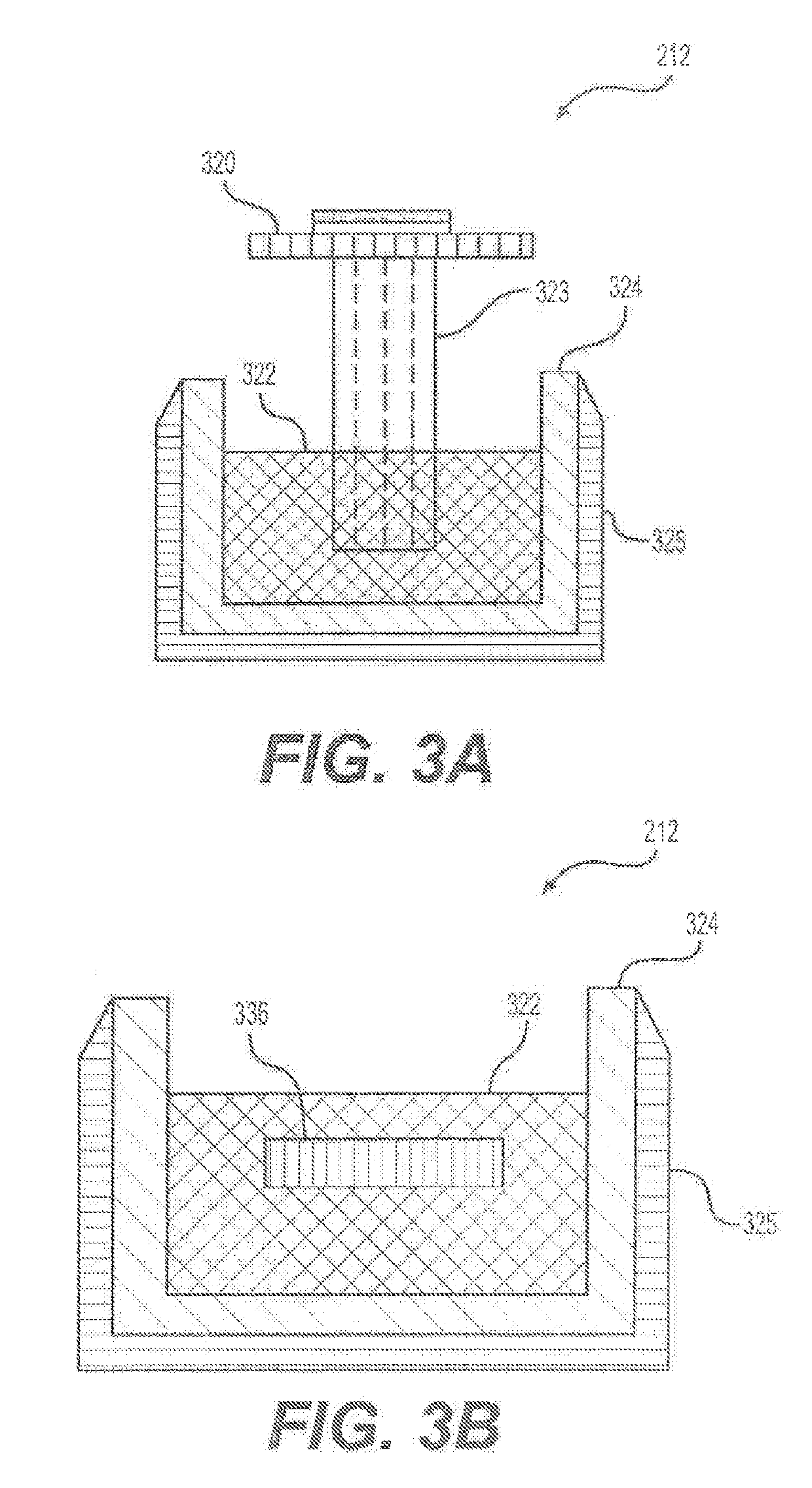Apparatuses for processing additive manufactured objects and methods of use
a technology of additive manufacturing and apparatus, which is applied in the direction of additive manufacturing processes, manufacturing tools, coatings, etc., can solve the problems of difficult application of additional surface finishing techniques, such as painting or electroplating, to objects created using additive manufacturing processes, and less aesthetically appealing than those prepared, so as to reduce the health risk of users, reduce the rough surface of objects, and facilitate observation
- Summary
- Abstract
- Description
- Claims
- Application Information
AI Technical Summary
Benefits of technology
Problems solved by technology
Method used
Image
Examples
example 1
Preparation of an Exemplary PVB Material
[0070]Raw PVB resin (B05HX made by Chang Chun Group, in the form of a fine powder) was first hued in an oven at 60° C. for 4 hours. It was then dry-blended with 0.03% of an anti-oxidant (B215 from BASF) and 0.5% of titanium dioxide (R-902 from DuPont), and pelletized using a 20 mm twin-screw extruder.
[0071]The pellets were then dried at 60° C. for another 4 hours and gravity-fed to a 20 mm single-screw extruder to manufacture it into a filament. The temperatures used for manufacturing the PVB filament were shown in Table 1.
TABLE 1Exemplary processing temperaturesFeed zoneCompression zoneMetering zone Die90° C.160° C.220° C.190° C.
[0072]The extrudate, pulled by a puller at a constant speed, was cooled in a water tank, and collected on a spool. The puller speed was set to draw the filament to a final diameter of about 1.75 mm. The spooled filament was then dried before printing object 100.
[0073]In some embodiments, the material for making object...
example 2
Measurement of the Roughness of the Surface of Exemplary Objects 100
[0078]A compounded material was prepared for making exemplary objects 100 by (1) manually mixing all of the ingredients as shown in Table 2 in the formulation (2) melt compounding the ingredients using a 20 mm co-rotating twin-screw extruder under the conditions listed in Table 3, and (3) manufacturing the compounded material into a filament with an average diameter of 1.75 mm via single-screw extrusion, under the extrusion conditions listed in Table 4.
TABLE 2The formulation of a compounded materialfor making an exemplary object 100Content (phr*)PVB (B05HX from Chang Chun Group)100Anti-Oxidant (B215 from BASF)0.3Nitrile Rubber15(P35 from OMNOVA Solutions)*“phr” means parts per hundreds of resin.
TABLE 3Melt compounding conditionsFeed2nd3rd4thZoneZoneZoneZoneDieRPMTemperature (° C.)120160190200190120
TABLE 4Filament extrusion conditionsFeedCompressionMeteringZoneZoneZoneDieRPMTemperature (° C.)9017020019030
[0079]The re...
example 3
Processing 3D-Printed Object 100 Using an Exemplary Apparatus 200
[0083]An exemplary apparatus 200 substantially similar to that shown in FIG. 2 was used. Apparatus 200 included an exemplary rotatable platform 213 for placing an exemplary 3D-printed 100, a nebulizing unit with two exemplary vibrating membrane nebulizers 212, and electrical circuits configured to power the nebulizing unit as well as the structural components.
[0084]An owl model (about 12 cm tall) was printed on a FlashForge Creator Pro desktop 3D printer using the filament prepared as described in Example 1, under the following printer settings: printing / nozzle temperature: 210° C.; build plate temperature: 60° C.; printing speed: 60 mm / s; layer height: 0.2 mm.
[0085]The printed owl model was processed or polished in apparatus 200 for about 40 min using isopropanol as an exemplary liquid 322. After processing or polishing, the owl model was removed from apparatus 200 and the surface of the owl model dried off under natu...
PUM
| Property | Measurement | Unit |
|---|---|---|
| diameters | aaaaa | aaaaa |
| diameters | aaaaa | aaaaa |
| diameters | aaaaa | aaaaa |
Abstract
Description
Claims
Application Information
 Login to View More
Login to View More - R&D
- Intellectual Property
- Life Sciences
- Materials
- Tech Scout
- Unparalleled Data Quality
- Higher Quality Content
- 60% Fewer Hallucinations
Browse by: Latest US Patents, China's latest patents, Technical Efficacy Thesaurus, Application Domain, Technology Topic, Popular Technical Reports.
© 2025 PatSnap. All rights reserved.Legal|Privacy policy|Modern Slavery Act Transparency Statement|Sitemap|About US| Contact US: help@patsnap.com



